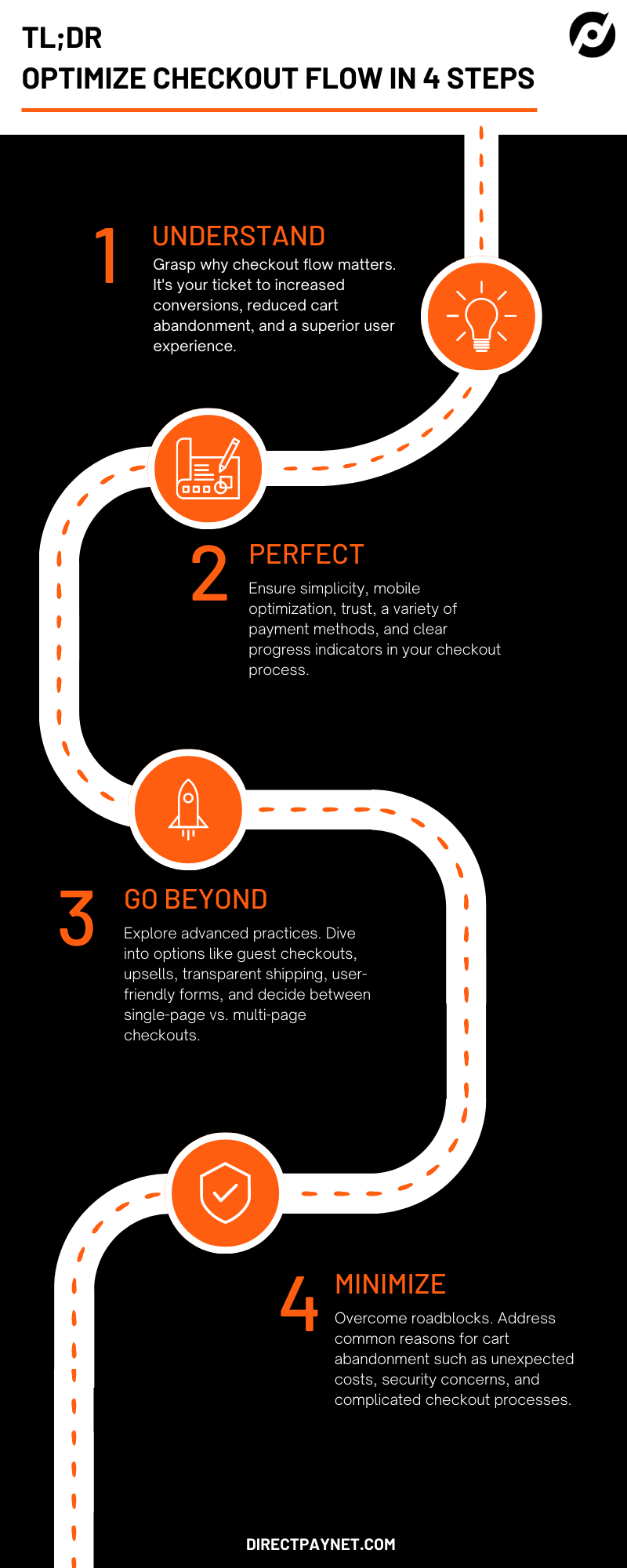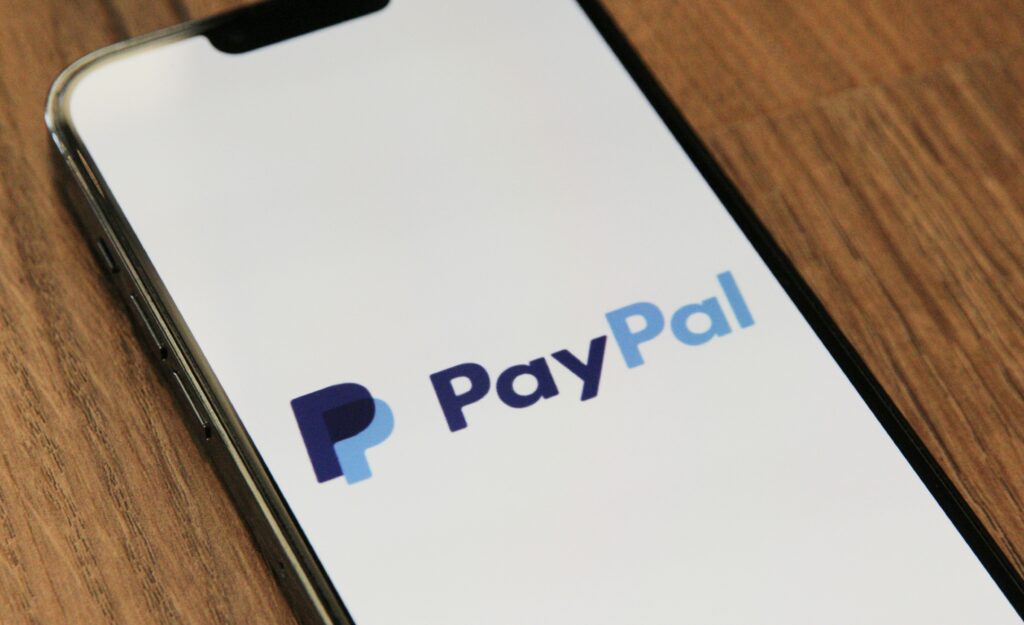Think back to the last time you purchased something online.
What stood out? Was it the smoothness of the process, or perhaps a snag that almost made you abandon your cart?
At the heart of these experiences lies the ecommerce checkout process—a pivotal moment that can make or break a sale. It’s not just about clicking “Buy Now”; it’s about the seamless transition from an interested shopper to a satisfied customer. And this, dear readers, is where the art of the “checkout flow” steps into the limelight.
With cart abandonment rates at an all-time high and the e-commerce competition fiercer than ever, optimizing this crucial step is the key to conversion success. So, buckle up as we dive deep into the intricacies of ecommerce checkout flows, unearthing the best practices, trends, and tricks that top e-commerce giants swear by in 2023.
Why Does the Checkout Flow Matter?
First and foremost, the checkout process is like the finale of a grand performance. It’s the climax of the user’s shopping journey, the culmination of their browsing, selecting, and decision-making.
If this process stumbles, even slightly, it could mean a lost sale. Consider this: a cart abandonment rate averaging around 70% means that nearly three out of every four shoppers leave without completing their purchase. That’s a staggering number!
The checkout flow isn’t just about transactions; it’s an embodiment of a brand’s commitment to its customers. A smooth, efficient, and intuitive checkout process showcases professionalism, attention to detail, and genuine care for the customer experience. On the other hand, a clunky, confusing, or lengthy checkout can sow seeds of doubt. It raises questions about security, reliability, and the brand’s overall quality.
A positive checkout experience can bolster a brand’s reputation, leading to repeat purchases, glowing reviews, and priceless word-of-mouth recommendations. Conversely, a less-than-stellar checkout flow can result in public critiques, lower customer retention, and missed opportunities for loyalty-building.
In a nutshell, while products draw customers in, it’s the checkout flow that seals the deal. In the competitive realm of e-commerce, it’s not just about getting shoppers to the cart page—it’s about guiding them through it with ease, security, and confidence.

Essentials of an Effective E-commerce Checkout
As online shopping grows and changes, so do the expectations of savvy online shoppers. They crave efficiency, clarity, and most of all, trustworthiness when it comes to parting with their hard-earned money. So, what are the non-negotiables for an e-commerce checkout that truly shines? Let’s unpack them:
Simplicity and Clarity
Ah, the mantra of modern design: Keep it simple. The checkout process should feel like a gentle, guiding hand, not a maze. A clutter-free checkout design, intuitive layout, and a clear path to purchase make a world of difference. Avoid overwhelming shoppers with too many options or asking for unnecessary details. Stick to the essentials, and keep the journey straightforward. And always, always ensure that crucial checkout buttons like “Continue” or “Purchase” are easily visible.
Mobile-First Approach
With the explosion of smartphones and tablets, more shoppers than ever are making purchases right from their palms. This means your checkout process needs to look and feel impeccable on mobile devices. Think responsive design, large touch-friendly buttons, and forms that are a breeze to fill out even on the smallest of screens.
Building Trust from Cart to Completion
Trust isn’t given; it’s earned. And in the e-commerce space, earning trust can make all the difference. Display those security badges and SSL certificates prominently. Incorporate trust signals at every step, reminding customers that their personal and payment information is safeguarded with the utmost care.
Catering to Everyone with Multiple Payment Methods
Imagine a shopper ready to make a purchase only to find out their preferred payment method isn’t accepted. A true buzzkill, right? Avoid this by offering a range of payment options. From the universal credit card to e-wallets like PayPal and Apple Pay, give shoppers the flexibility to choose their preferred checkout method.
Guiding the Way with Progress Indicators
Nobody likes to be left in the dark, especially when money’s involved. Progress indicators act as a roadmap, showing shoppers where they are and what’s next in their checkout journey. By visually breaking down the process—be it ‘Shipping’, ‘Billing’, or ‘Order Confirmation’—you provide clarity and manage expectations, keeping potential frustrations at bay.
Advanced Checkout Practices for the Modern Retailer
As the e-commerce world becomes increasingly sophisticated, it’s not enough to just stick to the basics. To truly stand out and deliver a top-tier user experience, retailers must look beyond the essentials and integrate advanced practices that cater to today’s discerning digital shopper. Here’s where the real differentiation begins:
- Guest vs. Account Checkout: We live in an era of options and instant gratification. While some shoppers appreciate the perks of having an account—like faster checkouts and saved preferences—others might just be passing by and prefer a swift, no-strings-attached purchase. Offer both options, but consider enticing the ‘guests’ with easy account creation perks post-purchase. A balanced approach ensures you cater to all, without pushing anyone away.
- The Power of Upsells and Cross-sells: The checkout process is a delicate time to introduce additional products, but when done right, it can significantly boost your average order value. Display related products, limited-time offers, or popular add-ons in a non-intrusive manner. Think of it as the digital equivalent of the tempting candy shelf near traditional store checkouts—just a gentle nudge towards more value.
- Shipping and Additional Costs: Hidden fees? They’re the quickest way to an abandoned cart. From the get-go, maintain transparency with shipping costs, taxes, and any other additional charges. Offering a range of shipping options—from express deliveries to more affordable, slower alternatives—can also be a game-changer. And if feasible, explore the magic words: ‘Free Shipping’.
- Making Forms User-Friendly: Long, complex forms? They’re a relic of the past. Modern checkout forms should be quick to fill, free of jargon, and armed with features like autofill. Intuitive error messages and real-time validation can make this process even smoother. For instance, if someone mistypes their email, a friendly nudge saying “Did you mean…?” can make all the difference.
- Single-Page vs. Multi-Page Checkout: The debate continues! While one-page checkouts offer brevity and immediacy, multi-page layouts can provide clarity by segmenting different parts of the process. The key? Test and understand your audience. Some demographics might appreciate the comprehensiveness of a multi-page checkout, while others lean towards the speed of a one-pager.
Leading Online Stores and Their Checkout Flows
We’ve talked theory; now, let’s delve into real-world practice. There’s no better way to understand the impact of a well-optimized checkout flow than by studying the masters of the e-commerce realm. Let’s take a look at some industry leaders and how they’ve perfected their checkout game:
Amazon – The One-Click Wonder
Arguably the titan of e-commerce, Amazon’s patented “1-Click” ordering system is a masterclass in checkout efficiency. By securely saving user details, like shipping address, billing address, and card details, repeat customers can make purchases with just a single click, eliminating numerous steps and reaffirming Amazon’s commitment to user-centric design.
Shopify – Customization at its Finest
Shopify-powered ecommerce stores are renowned for their adaptability. Retailers can choose from a variety of checkout templates or design their own, ensuring a unique experience that’s tailored to their brand and audience. From progress indicators to mobile checkout optimization, Shopify showcases the power of personalization.
ASOS – Embracing Guest Checkouts and More
ASOS, the fashion giant, understands its clientele—often young, tech-savvy, and sometimes impatient. Their checkout offers both guest and account options, a wide range of payment methods, and clear delivery timelines, ensuring that style enthusiasts have a hassle-free buying experience.
Apple – Seamless Integration with Apple Pay
Apple’s e-commerce platform takes full advantage of its ecosystem. With Apple Pay, users can check out using their stored payment details across devices—be it iPhone, iPad, or Mac. This cohesion between hardware and e-commerce ensures a smooth, unified shopping experience.
Etsy – Celebrating Trust and Transparency
As a platform for unique, often handcrafted goods, Etsy places immense emphasis on building trust. Their checkout flow includes detailed seller ratings, transparent shipping costs, and even the story behind each creator. By humanizing the buying process, Etsy offers more than just products; they sell experiences.
Each of these e-commerce giants, while operating in varied sectors, recognizes the importance of a frictionless checkout flow. They’ve refined, tested, and tailored their processes over time, resulting in a boost in conversion rates, reduced cart abandonments, and an elevated brand image. For budding e-commerce businesses, these success stories offer invaluable lessons and a clear path to checkout excellence.
Tips to Minimize Cart Abandonment
You’ve spent countless hours perfecting your e-commerce site—curating products, writing compelling descriptions, and ensuring your visuals are on point. And yet, that dreaded moment happens: a potential customer abandons their shopping cart. It’s a frustrating experience, but you’re not alone. Let’s delve into some of the most common reasons for cart abandonment and how to expertly navigate these roadblocks:
- Unexpected Costs: Surprises are great for birthdays, not so much at checkout. If a customer is suddenly presented with unexpected shipping fees, taxes, or other additional costs, they might think twice about proceeding. Tip: Be transparent from the beginning. Consider a shipping calculator on product pages or clearly communicate any extra fees early in the checkout process.
- Complicated Checkout Process: If a customer feels like they’re running a marathon just to purchase an item, they’re more likely to give up halfway. Tip: Streamline your process. Reduce the number of pages or steps, ensure navigation is intuitive, and provide clear instructions throughout.
- Security Concerns: In the age of digital fraud and data breaches, online security is paramount. If your ecommerce checkout page looks sketchy or lacks clear trust signals, customers may hesitate. Tip: Incorporate recognized security badges, employ SSL encryption, and regularly update your security protocols.
- Limited Payment Options: Every customer has a preferred method of payment. If you don’t offer theirs, they might not be willing to compromise. Tip: Incorporate a range of payment options. Consider credit cards, e-wallets, bank transfers, and even options like Buy Now, Pay Later.
- Mandatory Account Creation: Not everyone wants to commit long-term. Forcing users to create an account can sometimes deter impulse purchases or those in a hurry. Tip: Offer a guest checkout option. If you want to encourage account sign-ups, provide incentives like quicker future checkouts, order tracking, or special discounts.
- Lack of Reassurance: Doubts can creep in, especially if it’s a customer’s first time on your ecommerce website. Tip: Offer easy access to return policies, FAQs, customer reviews, and live chat support. The more information and assistance you provide, the more confident they’ll feel pressing that ‘Buy’ button.
We Can Help You Optimize Your Checkout Flow
Navigating the world of e-commerce is no small feat. From curating products to ensuring your customers reach the final ‘Thank You’ order summary page, every step counts. But as we’ve discovered, the journey from cart to confirmation is where the real magic happens. A well-optimized, user-friendly, and trustworthy checkout flow is the cornerstone of turning browsing intent into successful sales.
However, not all businesses have a smooth path. High-risk merchants, in particular, face unique challenges in the e-commerce arena. But that’s where tailored solutions come into play.
DirectPayNet is your trusted partner in this journey. Offering specialized high-risk merchant accounts, they ensure that your business—no matter the industry or risk profile—can provide seamless, secure, and efficient payment processes. With DirectPayNet, you’re not just getting a service; you’re partnering with a team that understands the intricacies of high-risk e-commerce and is committed to powering your success.
So, why let hurdles slow you down? Elevate your checkout flow, minimize abandonment, and watch your e-commerce thrive. Ready to take the next step with DirectPayNet? Your journey to checkout excellence starts here.







